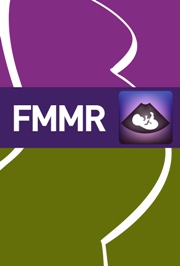Article contents
RESPIRATORY DISTRESS SYNDROME
Published online by Cambridge University Press: 01 August 2008
Extract
Respiratory Distress Syndrome (RDS) is due to immaturity of the lungs, primarily the surfactant synthesising system; hence, the risk of RDS is inversely proportional to gestational age. The incidence of RDS has been reduced by the routine use of both antenatal corticosteroids and postnatal surfactant, but still approximately one per cent of babies develop RDS. Hyaline membranes, formed from plasma proteins which have leaked onto the lung surface through damaged capillaries and endothelial cells, line the terminal airways. Hence, RDS has also been called hyaline membrane disease, but RDS is the preferred name as the presence of hyaline membranes can only be confirmed histologically. The aim of this review is to emphasize the pathophysiology of RDS and the clinical presentation and relevance of diagnostic techniques in the current population of very prematurely born infants, highlighting the differential diagnosis. In addition, the evidence base for prophylactic and management strategies including whether new therapies and techniques of respiratory support have positively impacted on outcomes are discussed. The mortality and long term morbidity associated with very premature birth are described. Our increasing understanding that the so-called new bronchopulmonary dysplasia (BPD) and associated chronic adverse respiratory outcomes in such infants can reflect antenatal events resulting in abnormal lung growth is highlighted.
- Type
- Research Article
- Information
- Copyright
- Copyright © Cambridge University Press 2008
References
REFERENCES
- 3
- Cited by


